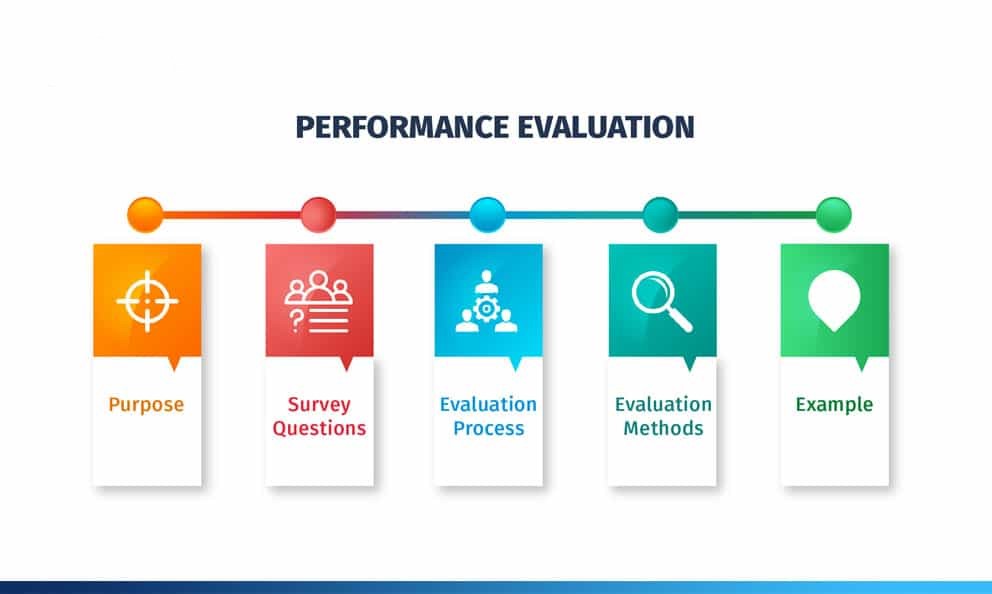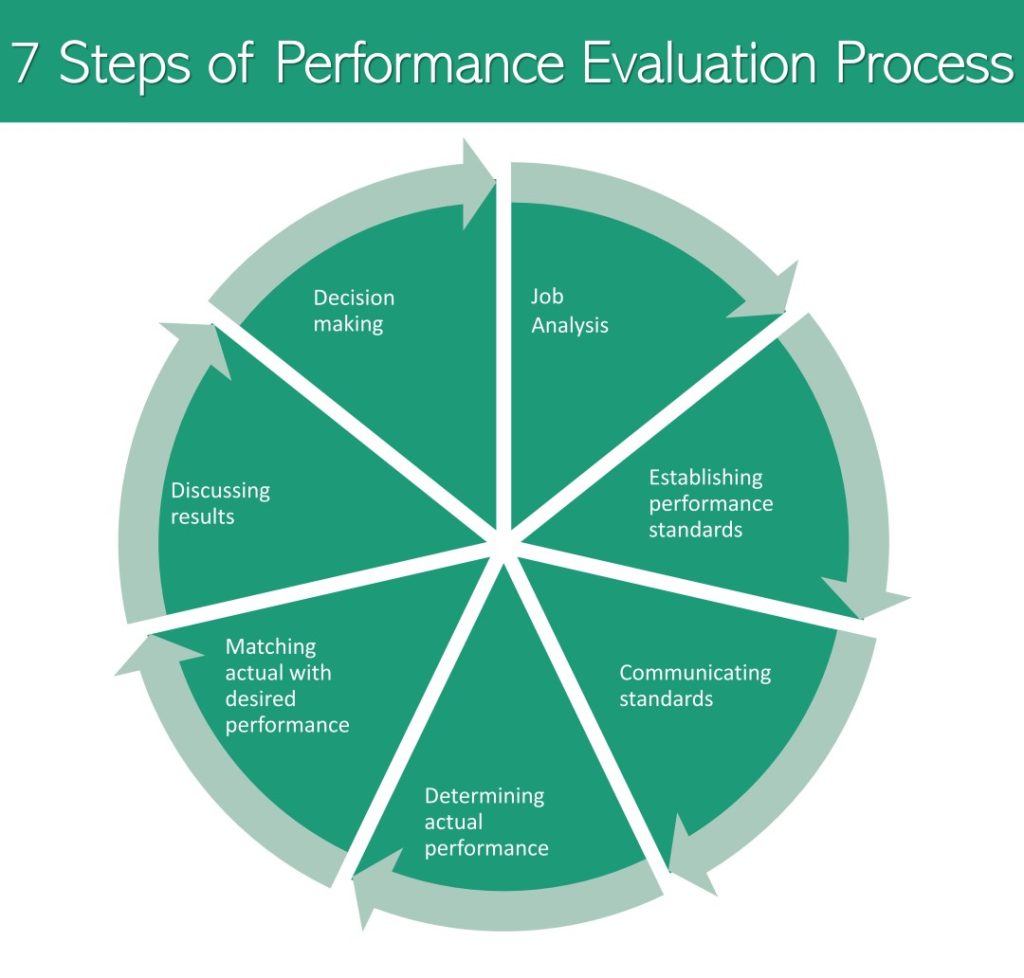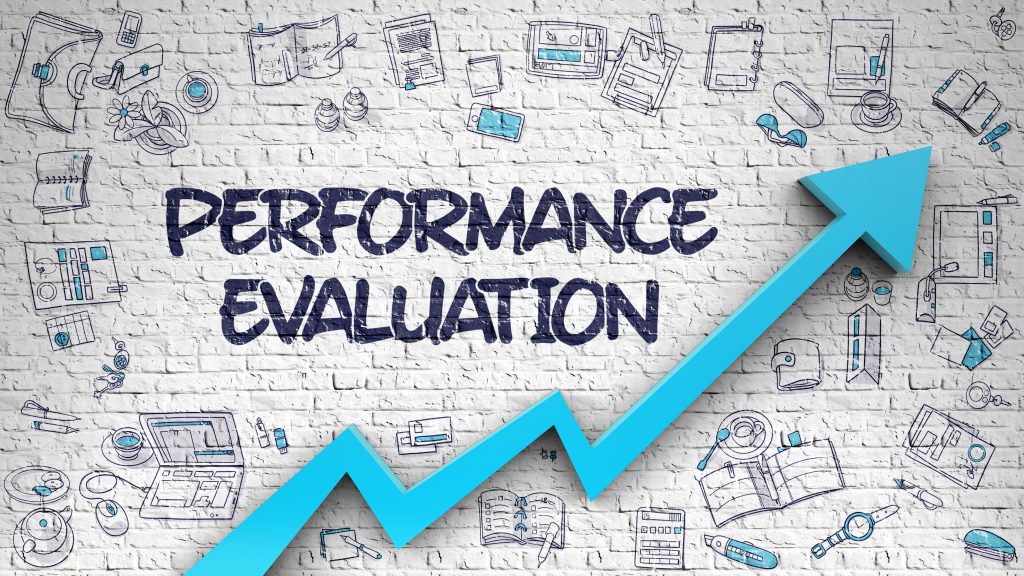In the current economic environment, which is characterized by rapidity and competition, companies are continuously looking for methods to optimize employee potential and promote long-term expansion. Employee training and development as well as performance review are two essential elements in accomplishing this goal. Through the implementation of comprehensive training and development programs and strong performance evaluation systems, firms may cultivate talent, promote a culture of continuous improvement, and eventually increase their overall success.

Comprehending Performance Evaluation
The methodical procedure of evaluating and quantifying worker performance inside a company is called performance evaluation. It entails establishing precise goals, giving constructive criticism, and assessing both team and individual performance concerning predefined standards. Performance evaluation has several uses, such as:
Establishing Expectations
Outlining goals and performance standards for staff members and coordinating their efforts with those of the company.
Giving Feedback
Educating staff members on their areas of strength, areas for development, and performance in comparison to expectations.
Determining Development Needs
By determining areas of skill weakness and opportunities for improvement, companies can customize training programs to meet particular requirements.
Rewarding Performance
Acknowledging and rewarding top performers encourages staff to reach their greatest potential. This is known as a performance reward.
The Value of Training and Development for Employees
Employee development and training include a variety of initiatives aimed at improving workers’ competencies—that is, their talents, knowledge, and skills—within an organization. On-the-job training, seminars, workshops, e-learning courses, and mentoring programs are a few examples of these activities. Employee development and training are crucial for many reasons:
Skill Enhancement
Enhancing an employee’s skill set can help them carry out their jobs more successfully by giving them the chance to learn new things.
Career Advancement
Career advancement is giving workers the tools they need to grow professionally by acquiring new skills and talents.
Employee Engagement
Showing that you are dedicated to the professional development of your staff members can result in increased levels of engagement, satisfaction, and retention.
Organizational Adaptability
Developing a workforce that is robust and adaptive in the face of shifting market conditions, technology breakthroughs, and industry trends is known as organizational adaptability.
The Mutual Benefit of Training and Development for Employees and Performance Evaluation:
Employee training and development and performance evaluation have a symbiotic relationship in which both elements support and enhance one another. Through the utilization of performance assessment information, firms can pinpoint areas that require enhancement and customize training programs to meet particular requirements. On the other hand, staff development and training can improve output, which will benefit performance reviews as a whole.

Using Training to Benefit from Performance Assessment Insights:
A useful source of data for determining training requirements and directing training programs is performance assessment. Through the examination of performance data and feedback, entities can:
- Determine where staff need to improve and where they have skill gaps.
- Ascertain which interventions or training courses are most helpful and pertinent.
- Customize training materials and ways of delivery to meet individual requirements and preferences.
- Analyze the success of training programs by following changes in performance indicators over time.
Improving Training-Based Performance Evaluation:
The following are some ways that employee training and development programs can directly affect how effective performance review procedures are:
- Giving staff members the abilities and information needed to carry out their jobs more successfully.
- Enhancing worker motivation and engagement, which raises output and performance standards.
- Giving staff members the chance to get advice, support, and criticism to help them work better.
- Promoting an environment that values ongoing learning and development and encourages staff members to look for opportunities for personal and professional development.
Explore More Compensation and Benefits for a Motivated Workforce
Putting in Place Training and Performance Evaluation Programs That Work:
Organizations should think about the following best practices to optimize the advantages of employee training and development as well as performance evaluation:
Establish Clear Objectives
Ensure that performance assessment and training efforts are in line with corporate priorities and goals by clearly defining their goals and expectations.
Give Regular Feedback
Inform staff members of their performance on time, emphasizing both their areas of strength and room for development.
Initiatives for Tailor Training
Individual learning preferences and styles should be taken into consideration when tailoring training programs to meet specific needs that have been identified through performance reviews.
Encourage worker involvement
Promote a culture of ongoing learning and growth by encouraging active involvement and engagement in training programs.
Track and Assess Progress
Keep a close eye on the success of training and performance evaluation initiatives, and make necessary adjustments to maximize results.

Case Study: XYZ Company’s Success
Leading technology company Company XYZ understood that to promote organizational success, performance assessment and staff training and development needed to be integrated. Company XYZ saw notable gains in worker performance, engagement, and retention by putting in place an extensive performance review system and funding substantial training programs.
Company XYZ recognized areas for improvement and customized training programs to target particular skill gaps and development needs through routine performance evaluations. Company XYZ promoted a culture of continual learning and improvement by giving staff members the chance to advance their knowledge and abilities. This raised performance and productivity levels all over the company.
Company XYZ became a leader in its market and saw improvements in organizational performance, lower employee attrition, and enhanced employee satisfaction as a result of its integrated approach to performance assessment and staff training and development.
In summary, promoting organizational success via integration
In conclusion, in today’s cutthroat economic climate, organizational success depends on the mutual reinforcement of staff training and development and performance review. Organizations can optimize workforce potential and accomplish strategic goals by utilizing performance assessment information to inform training programs and improve performance through focused training interventions.
Integrating performance eval with employee training and development will continue to be a top goal for companies as they focus on staff development and performance improvement. Organizations can foster an exceptional work environment where workers are empowered to realize their full potential and contribute to the success of the company by implementing a comprehensive strategy that prioritizes ongoing learning, feedback, and development.










